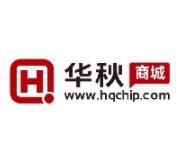| Technology Family | LS |
| Number of channels (#) | 1 |
| Operating temperature range (C) | 0 to 70 |
| Rating | Catalog |
| ICC (Max) (uA) | 10000 |
- Open-Collector Outputs Drive Indicators Directly
- Lamp-Test Provision
- Leading/Trailing Zero Suppression
'246, '247, 'LS247 feature
- Internal Pull-Ups Eliminate Need for External Resistors
- Lamp-Test Provision
- Leading/Trailing Zero Suppression
'LS248 feature
- All Circuit Types Feature Lamp Intensity Modulation Capability
The '246 and '247 are electrically and functionally identical to the SN5446A/SN7446A, and SN5447A/SN7447A respectively, and have the same pin assignments as their equivalents. The 'LS247 and 'LS248 are electrically and functionally identical to the SN54LS47/SN74LS47 and SN54LS48/SN74LS48, respectively, and have the same pin assignments as their equivalents. They can be used interchangeably in present or future designs to offer designers a choice between two indicator fonts. The '46A, '47A, 'LS47, and 'LS48 compose the 6 and 9 the without tails and the '246, '247, 'LS247, and 'LS248 compose the and the with tails. Composition of all other characters, including display patterns for BCD inputs above nine, is identical. The '246, '247, and 'LS247 feature active-low outputs designed for driving indicators directly, and the 'LS248 features active-high outputs for driving lamp buffers. All of the circuits have full ripple-blanking input/output controls and a lamp test input. Segment identification and resultant displays are shown below. Display patterns for BCD input counts above 9 are unique symbols to authenticate input conditions.
All of these circuits incorporate automatic leading and/or trailing-edge zero-blanking control (RBI\ and RBO\). Lamp test (LT\) of these types may be performed at any time when the BI\/RBO\ node is at a high level. All types contain an overriding blanking input (BI) which can be used to control the lamp intensity by pulsing or to inhibit the outputs. Inputs and outputs are entirely compatible for use with TTL logic outputs.
Series 54 and Series 54LS devices are characterized for operation over the full military temperature range of -55°C to 125°C; Series 74 and Series 74LS devices are characterized for operation from 0°C to 70°C.








